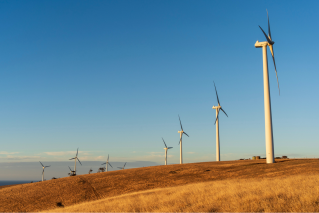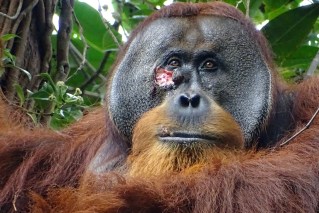Mysterious whale feeding strategy may have inspired mediaeval sea monster myths


A digital reconstruction of a humpback whale trap feeding. Image: John McCarthy, Flinders University
A misunderstood feeding strategy in whales may have contributed to the development of myths about mediaeval sea monsters.
The strategy, known as trap feeding or tread-water feeding, involves whales opening their jaws at right angles and waiting for shoals of fish to swim into their mouths.
A clip of this strategy was captured in 2021 and went viral on Instagram.
This feeding behaviour was first identified in 2011.
Scientists speculate that changing environmental conditions and the increased use of modern technologies led to its discovery.
The strategy has been witnessed in baleen whales, which include several species such as the humpback whale, blue whale, and gray whale.
Baleen whales have baleen plates in their mouths instead of teeth.
These plates are made of keratin, the same material as human hair and nails, and are used to filter small animals, such as krill and plankton, from sea water.
Mysterious behaviour in ancient manuscripts
Now, researchers in Australia think they may have found evidence of this feeding strategy described in ancient accounts of sea creatures, recorded more than 2000 years ago.
Dr John McCarthy, a maritime archaeologist at Flinders University, noticed similarities between marine biology and Norse sea monsters while reading mediaeval literature.
“It struck me that the Norse description of the hafgufa (a sea monster) was very similar to the behaviour shown in videos of trap-feeding whales, but I thought it was just an interesting coincidence at first,” he told The New Daily.
“Once I started looking into it in detail and discussing it with colleagues who specialise in medieval literature, we realised that the oldest versions of these myths do not describe sea monsters at all, but are explicit in describing a type of whale.”
Norse manuscripts describing the hafgufa date from the 13th century and remained part of Icelandic myths until the 18th century. It was often included in accounts alongside the Kraken and mermaids.
Another whale-like creature referenced in Norse bestiaries is the aspidochelone.

Icelandic Physiologus (c.1200) depiction of the Aspido feeding. Image: Public Domain
According to legend, both the hafgufa and aspidochelone were said to emit a special perfume or scent that helped lure fish towards their stationary mouths.
Researchers suggest this element may have been inspired by whales regurgitating prey, to help attract more quarry into their mouth.
Why now?
Scientists aren’t sure why the feeding strategy has only recently been identified but speculate that it’s a result of changing environmental conditions – or that whales are being more closely monitored than ever before by drones and other modern technologies.
Dr McCarthy said the increase in sightings of whales engaging in “trap-feeding” behaviour is primarily related to the recovery of whale populations.
“There are more whales in the ocean so they’re more visible … but they’re also potentially having to rely on more strategies for feeding because there’s more competition for the same food source.”
Erin Sebo, a researcher in mediaeval literature and language at Flinders University, suggested the discovery showed that people had accurate knowledge about the natural world long before modern science.
“It’s exciting because the question of how long whales have used this technique is key to understanding a range of behavioural and even evolutionary questions,” Dr Sebo said.
“Marine biologists had assumed there was no way of recovering this data, but using mediaeval manuscripts we’ve been able to answer some of their questions.
“We found that the more fantastical accounts of this sea monster were relatively recent, dating to the 17th and 18th centuries and there has been a lot of speculation among scientists about whether these accounts might have been provoked by natural phenomena, such as optical illusions or underwater volcanoes.”
She said the behaviour described in mediaeval texts was simply whale behaviour that modern humans had not observed but mediaeval and ancient people had.








